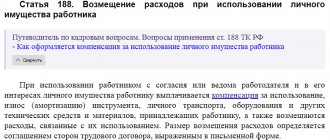Official website of the Supreme Court of the Russian Federation
The plenum of the Supreme Court of the Russian Federation discussed a draft resolution on cases of crimes encroaching on the established procedure for the circulation of official documents, state awards, excise stamps, as well as the procedure for recording vehicles. It turned out that judicial practice is very contradictory. And recent changes to criminal legislation have only added problems to law enforcement officers. Lack of clarity and uniform approach
The speaker, Judge of the Supreme Court of the Russian Federation Tatyana Ermolaeva, recalled that in 2019 the legislator made significant changes to Article 327 of the Criminal Code of the Russian Federation, aimed at strengthening liability for forgery, production or circulation of counterfeit documents, state awards, stamps, seals or forms. In addition, Article 327.1 of the Criminal Code of the Russian Federation (production, sale of counterfeit excise stamps, special stamps or marks of conformity) has been repeatedly edited to make it stricter.
“These changes, not consistent in all respects, but contradictory in a number of ways, have brought a number of problems to judicial practice in criminal cases of such crimes,” advised the judge of the Supreme Court of the Russian Federation.
Ermolaeva provided general statistics. About 11-12 thousand people are convicted annually for committing crimes under Articles 324–327.1 of the Criminal Code of the Russian Federation. At the same time, criminal cases against a quarter of the accused were dismissed by the courts on non-exonerating grounds. Including the imposition of a court fine. The vast majority of persons (about 95%) are prosecuted under Article 327 of the Criminal Code.
“The study of judicial practice revealed a lack of clarity and a uniform approach among the courts on a number of issues regarding the application of this article,” said the judge of the Supreme Court.
First of all, according to Ermolaeva, difficulties are associated with the lack of legislative definitions of the concepts of “official document”, “official document granting rights or relieving oneself from obligations”, as well as “important personal document”. Despite the fact that for the purposes of criminal law relations it is difficult and sometimes incorrect to use the interpretation of documents contained in other branches of law. The Constitutional Court of the Russian Federation drew attention to this circumstance in its ruling dated May 19, 2009. Also, the legislator has not proposed clear distinctions between the criteria for different types of documents. And his approach to establishing crime and the punishability of unlawful acts with these documents is not entirely consistent.
Ermolaeva gave an example. Thus, according to Article 325 of the Criminal Code of the Russian Federation, liability for the theft of a citizen’s passport is less strict than for similar actions in relation to other official documents. And according to Article 327 of the Criminal Code of the Russian Federation, on the contrary, forgery of a passport and its use entail a more severe punishment than forgery of an official document granting rights or releasing one from obligations.
How to differentiate between documents
Ermolaeva gave a brief overview of the contents of the draft resolution, consisting of 19 points. The Supreme Court judge called the document “quite laconic,” but at the same time one that comprehensively includes an explanation of only those issues that concern the law enforcement officer.
Paragraphs 1–4 discuss the subject of crimes provided for in Articles 324, 325 and 327 of the Criminal Code of the Russian Federation. These points, according to Ermolaeva, contain the answer to the main question: what is meant by specific types of documents and how to distinguish them from each other.
In paragraph 1, taking into account the established judicial practice, it is explained that official documents granting rights or releasing from obligations in Article 324 of the Criminal Code of the Russian Federation and official documents in Part 1 of Article 325 of the Criminal Code of the Russian Federation mean such documents, including electronic ones, that are created and issued or are certified in the manner prescribed by law or other regulatory act by federal government bodies, government bodies of constituent entities of the Russian Federation, local government bodies or authorized organizations or persons. And the main purpose of these documents is that they certify legally significant facts.
Such documents fully include electronic documents. Recognition of the materiality of an electronic document as a type of document and its equivalence to a document on paper follows from the provisions of the federal laws on information and on electronic signatures.
“In the context of the development of digital technologies and the increasing use of electronic document management, unlawful actions in relation to electronic documents that are official can be qualified under Articles 324 and 325 of the Criminal Code of the Russian Federation, and their forgery - under Article 327 of the Criminal Code of the Russian Federation,” Ermolaeva explained.
Clause 2 of the draft is devoted to documents called “important personal” for the purposes of Part 2 of Article 325 of the Criminal Code of the Russian Federation (theft of a citizen’s passport or other important personal document). In addition to a citizen’s passport (including foreign, diplomatic or official), these include a military ID, driver’s license, pension certificate, certificate or diploma of education, vehicle registration certificate, vehicle passport and others. That is, documents belonging to a citizen that certify legally significant facts and give him a certain legal status, designed for their repeated or long-term use.
Corresponding explanations are contained in paragraph 6 of the draft. It states that theft, as well as the destruction, damage or concealment of a passport or other important personal document cannot be qualified under Part 1 of Article 325 of the Criminal Code of the Russian Federation (theft, destruction, damage or concealment of official documents, stamps or seals).
“This clarification reflects the principled position of the Presidium of the Supreme Court of the Russian Federation, developed over many years of practice,” Ermolaeva noted.
Fake or counterfeit?
Article 327 of the Criminal Code of the Russian Federation, as a result of amendments to it in 2019, established liability for the use of not only knowingly forged (Part 3), but also forged documents (Part 5). Paragraph 4 of the draft proposes a distinction between these crimes.
“It is not based on the difference in synonymous terms used by the legislator, but is based on the characteristics of documents protected by different parts of one article of the criminal law,” the speaker explained.
Thus, within the meaning of Part 5 of Article 327 of the Criminal Code of the Russian Federation, knowingly forged documents include any counterfeit documents certifying legally significant facts, with the exception of counterfeit citizen’s passports, identification cards or other official documents granting rights or releasing from obligations. For example, a forged civil contract, a diagnostic card of a vehicle, a decision of a general meeting of owners of premises in an apartment building.
Theft of state awards: the position of the Constitutional Court and the practice of the Supreme Court
Article 324 of the Criminal Code of the Russian Federation (purchase or sale of official documents and state awards) equally protects the circulation of state awards of the Russian Federation, the RSFSR, and the USSR. However, theft of official documents does not constitute a crime under this article. Responsibility for this crime is highlighted as an independent norm (Article 325 of the Criminal Code of the Russian Federation). Whereas responsibility for the theft of state awards is not an independent norm. In this regard, in judicial practice there is no unified approach to resolving the issue of whether theft is a way of illegally acquiring state awards and how exactly such actions should be qualified - under Article 324 of the Criminal Code of the Russian Federation or under the article of the Criminal Code of the Russian Federation providing for liability for theft of property. In paragraph 5, this problem of law enforcement is resolved as follows: the theft of state awards of the Russian Federation, the RSFSR and the USSR is one of the ways of their illegal acquisition and is qualified under Article 324 of the Criminal Code of the Russian Federation. If the theft of awards was associated with the use of violence, then such actions form a set of crimes provided for in Article 324 of the Criminal Code of the Russian Federation and the corresponding article of the Criminal Code of the Russian Federation on liability for a crime against life and health.
— This clarification is based on the legal position of the Constitutional Court of the Russian Federation that the public legal nature of a state award as an intangible benefit excludes the possibility of recognizing this benefit as an object of property rights. It is also confirmed by the practice of the RF Armed Forces on this issue,” Ermolaeva said.
What is recognized as fake license plates?
Paragraph 6 is devoted to Article 326 of the Criminal Code of the Russian Federation (falsification or destruction of a vehicle identification number). It is clarified that the use of a knowingly forged state registration plate includes, in particular, installation on a vehicle for the purpose of committing a crime or facilitating its commission or concealing a state registration plate produced in accordance with the established procedure, different from that included in the registration documents of this vehicle (for example, issued to another vehicle), driving for the same purposes a vehicle with such a state registration plate installed on it.
In this case, a counterfeit of a state registration plate is the production of such a sign in violation of the procedure established by the legislation on technical regulation or the introduction of changes into a sign manufactured in the established manner that distort the symbols applied to it (for example, by extrusion, mechanical removal of the symbol (symbols), erasure, touch-up) and allowing for a different interpretation of the sign.
Difficulties in applying Article 327
Paragraphs 8–14 of the draft are devoted to the application of Article 327 of the Criminal Code of the Russian Federation. In particular, paragraph 8 explains what exactly the forgery of a document consists of. Paragraph 10 proposes the interpretation “use of a forged (forged) document.” At the same time, the attention of the courts is drawn to the fact that the use by a person of his own original document that is invalid (for example, expired), or an original document belonging to another person, or the presentation of an original document similar to it instead of an appropriate document does not constitute a crime under Part 5 of Article 327 of the Criminal Code of the Russian Federation.
Paragraph 11 contains the answer to the question about the moment of termination of the use of a knowingly forged (forged) document. It is also explained here that if a deliberately forged (forged) official document presented by a person for the specified purpose was subsequently used to obtain rights or be relieved of obligations for a certain period (for example, during employment and during subsequent work in the organization), then the provisions provided for in Article 78 of the Criminal Code of the Russian Federation, the statute of limitations for criminal prosecution for such a crime should be calculated only from the moment of the actual cessation of the use of a forged (forged) official document, including as a result of the suppression of the act.
Qualification Questions
Ermolaeva noted that more dangerous crimes are committed using illegally acquired or counterfeit official documents, seals, stamps and forms - various frauds, smuggling, economic crimes. In this regard, courts often have questions related to the qualification of such acts, either according to the totality of such crimes, or only according to the article on a more serious crime, the method of which covers the illegal use of documents, stamps, seals, and forms.
In this regard, in paragraphs 12 and 13 of the draft, the attention of the courts is drawn to situations that require the qualification of acts as a set of crimes provided for both in various parts of Article 327 of the Criminal Code of the Russian Federation, and in other articles of the Criminal Code. It also reflects cases when the use of a deliberately forged document produced by another person to commit another crime is covered by the method of the crime committed (for example, fraud) and does not require an independent legal assessment under Part 3 or 5 of Article 327 of the Criminal Code of the Russian Federation.
Paragraph 14 contains clarifications regarding the qualification of acts under Part 4 of Article 327 of the Criminal Code of the Russian Federation and cases when acts can be recognized as committed with the aim of facilitating or concealing the commission of another crime. For example, when forgery and presentation of a false document are used for the purpose of illegally gaining access to a home or storage facility to commit theft.
Fake excise tax controversy
Paragraph 15 concerns the application of Article 327.1 of the Criminal Code of the Russian Federation on liability for the manufacture, sale of counterfeit excise stamps, special stamps or marks of conformity protected from counterfeiting, or their use. This item was proposed for consideration by the plenum with an option. In particular, the members of the plenum had to decide whether persons who themselves did not label alcohol and tobacco with counterfeit brands, but who purchased such products for the purpose of marketing, knowing for certain that those placed on them, could be held liable under Part 4 or 6 of Article 327.1 of the Criminal Code of the Russian Federation. fake stamps, and then sold it. At the same time, the speaker emphasized, it should be borne in mind that these persons did not commit actions that are described in the disposition of the article as the use of counterfeit stamps for marking.
— The opinions of the courts on this issue were significantly divided. This issue requires discussion,” Ermolaeva stated.
As a result, the draft resolution was sent to the editorial committee for revision.
Alexey Kvach
How to recognize a fake document yourself
Question : I work as a realtor and as part of my work I often have to receive various documents. How to recognize a fake (fake) document? Those. independently examine the document.
Answer: Conducting business activities often involves the appearance of documents of very dubious origin. Experts believe that identifying a fake is not difficult. One has only to take a closer look at the document, which is usually produced with one’s own hand using traditional office equipment. Some simple tips will help you identify fake powers of attorney, invoices, and expense reports.
The method of erasing, known to everyone since school days - mechanically removing numbers using sharp objects - is quite easy to install. This type of counterfeiting cannot be done perfectly. The surface of the paper at the site of impact of the razor or knife is noticeably damaged. Armed with a magnifying glass or table lamp, you can easily notice raised fibers, broken ruling lines, remnants of inclusions from a previous recording, and lack of uniformity of gloss.
Quite often you can notice an additional note or additional printing of characters on payment cards. New characters are added to the existing free line space or spaces between words. To do this, unscrupulous contractors select identical pens, paints, and printers. You can also dispel your doubts with the help of a magnifying glass. Preprinted characters differ from the original ones in thickness, color, and differences in spacing.
The use of infrared radiation also gives a good effect.
The difference in intensity of transmission and brightness between the original text and the pre-printed one will be obvious. Of course, in some cases it is impossible to do without the involvement of a criminologist with special knowledge in the field of handwriting and technical examination of documents. Sophisticated attackers resort to deleting records by discoloring them with a chemical reagent or organic solvent. The result of etching or washing off is the same - the disappearance of unnecessary information in the work book, cash receipt, bill of exchange. Outside of laboratory conditions, such a fake is quite difficult to establish. To some extent, looking at a questionable document in the light or using a magnifying glass will help. If you are lucky, there will be sizing irregularities, traces of blurring of the original recording, and changes in the color of the paper.
Falsification of multi-page documents is most often accompanied by the substitution of entire individual sheets, leaving the last one - with signature and seal - untouched. Experts claim that such fraud is quite easy to expose. In the re-stapled contract on the original sheets, the size of the holes from the stapler will be wider. Replacement sheets will likely vary in paper quality, characteristics and signs of aging.
Sometimes scammers resort to ironing the paper, creating the appearance of aging. However, such actions make the paper brittle. Naturally, the examination will determine whether the document experienced any thermal effects. You can recognize a fake by looking closely at the printed text. As a rule, scammers try to find a similar printer, however, this does not always work. Therefore, it is quite possible to find the differences between original and replaced sheets even with the help of a microscope or magnifying glass.
The vast majority of false autographs appear during the reporting period on orders, letters, and declarations. But even the external complete similarity of a forged signature with the original is established with the help of a magnifying glass. Each of the methods of imitation - copying against the light, sketching with a pencil, pressing with strokes - leaves its own characteristic traces.
To realize their criminal plans, swindlers resort to many tricks.
You can protect yourself only by following one simple rule - carefully examine the documents received by you, and if the slightest suspicion of a partner’s dishonesty arises, try to either expose the fraud yourself or resort to the help of professional experts. URGENTLY!
Hurry up to understand FSBU 5/2019 “Inventories” before you are fined . The easiest way is a short but complete advanced training course from accounting guru Sergei Vereshchagin
- Duration 25 hours for 1 month
- Your ID in the Rosobrnadzor register (FIS FRDO)
- We issue a certificate of advanced training
- The course complies with the professional standard “Accountant”
View full program
Commentary to Art. 327 Criminal Code
1. Subject of the crime: a) official documents granting rights or releasing from duties, including certificates as personal evidence of a person’s status (passport, driver’s license, service ID, etc.); b) state awards of the Russian Federation, RSFSR, USSR; c) stamps; d) printing; e) forms - paper forms with information partially reproduced on them, including details of an organization (department), intended for drawing up a document in a certain form.
On the concept of an official document granting rights or releasing from duties, state awards of the Russian Federation, the RSFSR, the USSR, a stamp, a seal, see the comments to Art. 324 and 325 of the Criminal Code.
2. According to Article 327 of the Criminal Code of the Russian Federation, the objective side of the main composition in part 1 (alternatively): a) forgery of a document by producing a fictitious document, usually having all the formal features, but certifying missing facts and conditions, or illegally changing a genuine document; b) production of counterfeit state awards, stamps, seals, forms; c) sale (transfer, alienation) of any of the named items.
3. Forgery of documents, as well as the production of counterfeit state awards, stamps, seals, forms, is carried out for the purpose of their use (presentation or presentation).
The subjects of counterfeiting or marketing are both the perpetrators of the counterfeiting and other persons.
4. The objective side of the second main composition (Part 3) is the use of a deliberately forged document for its intended purpose, i.e. its presentation, delivery, transfer and performance of other similar actions for the illegal acquisition of rights or release from obligations.
The use of a deliberately forged document in order to conceal or facilitate the commission of another crime does not require additional qualifications if it is an objective sign, in particular, it constitutes a deceptive method of committing another crime.
5. According to Art. 327 of the Criminal Code of Russia, the subject of the crime according to established judicial practice in Part 3 is a person who is not the manufacturer of the forged document.





